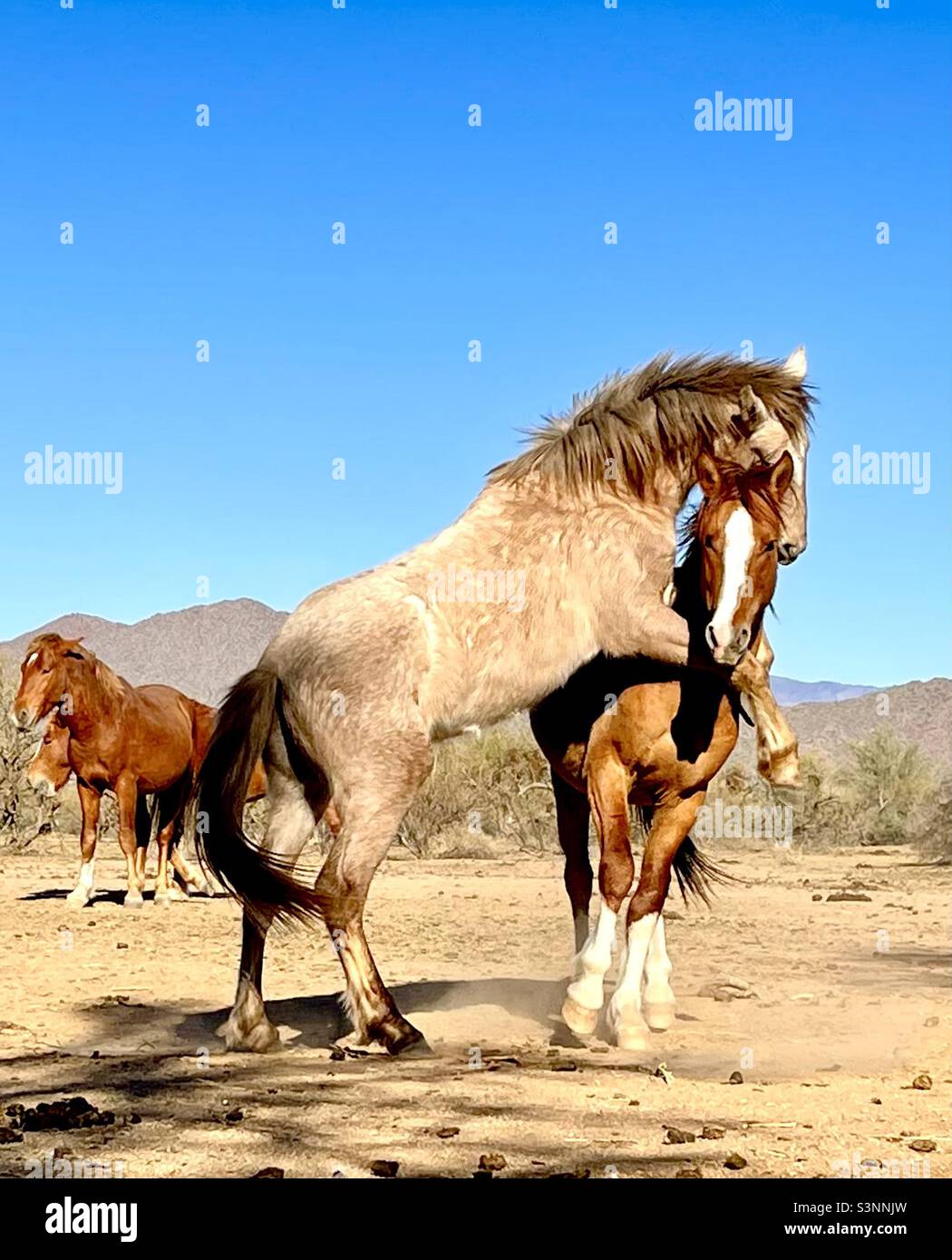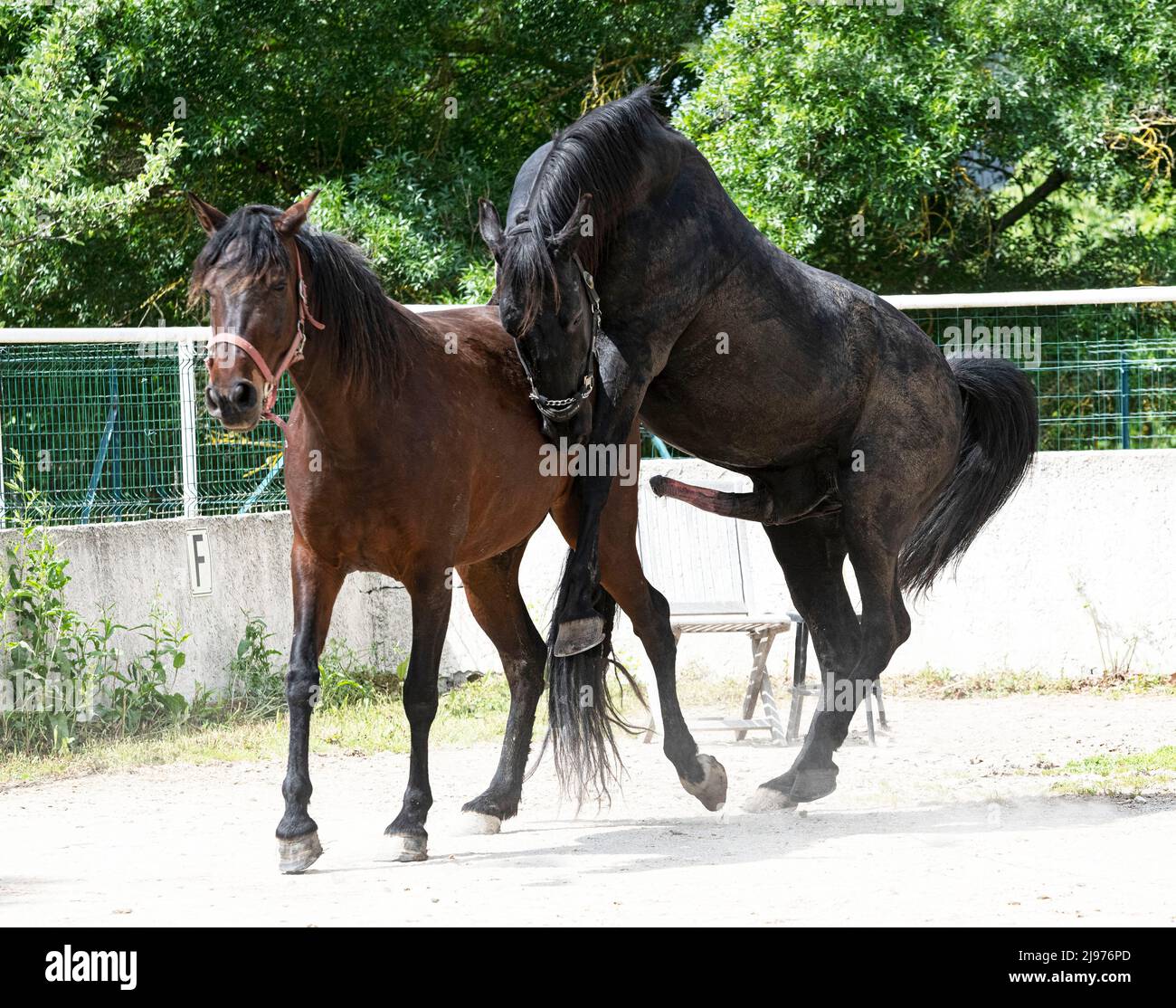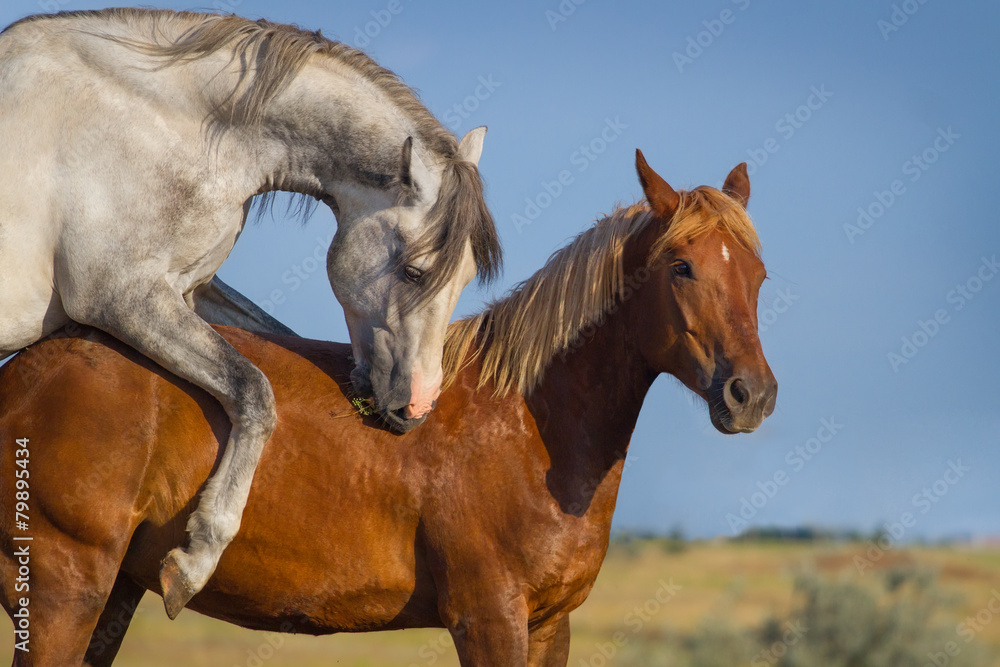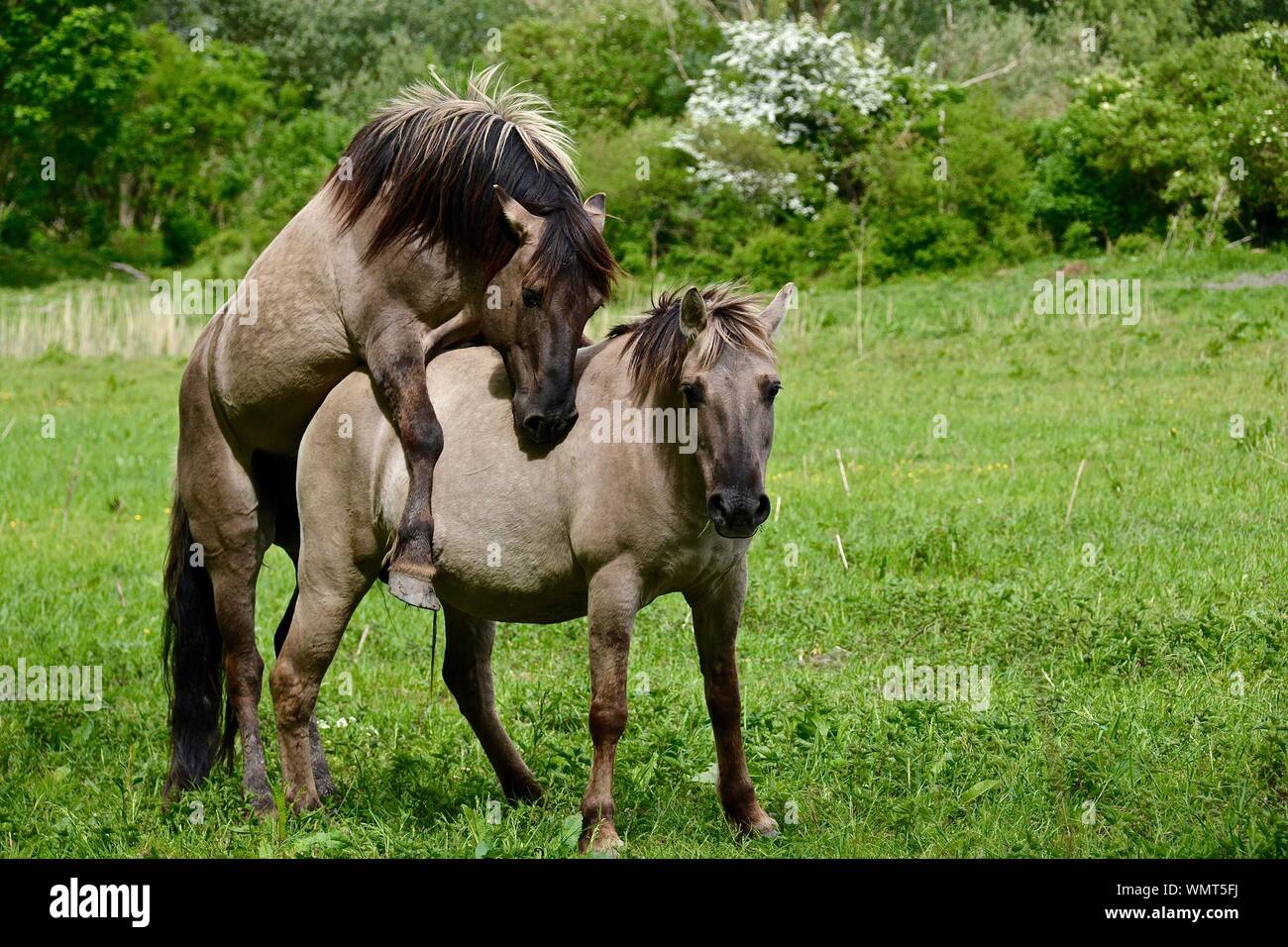Unveiling Mating Rituals: Secrets Of Horse Breeding Revealed!
Is the intricate dance of equine reproduction a subject that truly captures the imagination? The act of horses mating, a fundamental aspect of their biology, is a fascinating display of instinct, timing, and physical prowess, deserving of a deeper understanding.
The process, a carefully orchestrated series of events, is governed by hormonal cycles and the innate drives that ensure the continuation of the species. It's a complex interplay, often unseen, yet undeniably impactful on the world of horse breeding and the future of these magnificent creatures. We delve into the nuances of this natural phenomenon, exploring the physiological, behavioral, and environmental factors that shape the horses mating experience.
Understanding the horses mating process is crucial for anyone involved in equine care, breeding, or simply fascinated by animal behavior. It enables informed decisions about management, health, and the ethical considerations surrounding equine reproduction.
The mare's estrous cycle, also known as the heat cycle, dictates when she is receptive to mating. This cycle is influenced by factors such as the time of year, with longer daylight hours often stimulating reproductive activity. Hormonal changes, primarily the rise and fall of estrogen and progesterone, orchestrate the physiological and behavioral changes that signal the mare's readiness to conceive. The mares body will also send signals to the stallion, and with this mating can be possible.
The stallion, in turn, experiences his own hormonal influences, primarily testosterone, that affect his sexual drive and ability to perform. His behavior is marked by distinct courtship rituals, including flehmen response (curling of the upper lip to analyze the mare's scent), vocalizations, and physical displays of dominance. The stallion approaches the mare carefully, gauging her willingness before engaging in the act. The stallion's role also includes safeguarding the mare during the process.
When a mare is in heat, she will exhibit a range of behaviors that signal her receptivity. This can include frequent urination, lifting her tail, and "winking" of her vulva. She may also become more approachable and playful. These behaviors are clear indications to a stallion that she is ready to mate. It's a delicate balance, where the mares willingness is paramount, and the stallion's role is to gently and respectfully initiate the act.
The act of mating itself is a relatively brief event, lasting only a few seconds. It involves the stallion mounting the mare, achieving intromission (insertion of the penis into the vagina), and ejaculation. The semen, containing sperm, is deposited within the mare's reproductive tract. If successful, fertilization of the egg occurs, leading to pregnancy.
Pregnancy in mares lasts approximately 11 months (330-345 days). During this time, the mare requires special care, including proper nutrition, exercise, and veterinary attention. Monitoring her health and the development of the fetus is crucial for a successful outcome. This also includes regular checkups to ensure the well-being of the mare and the developing foal.
Foaling, the act of giving birth, is another critical phase. It is essential to recognize the signs of labor and to provide assistance if needed. The mare's health and the foal's survival depend on a timely and well-managed foaling process. This phase requires experience and attentiveness to prevent complications and ensure the foal's successful arrival.
There are numerous ethical considerations surrounding equine reproduction. Responsible breeders prioritize the health and welfare of both the mare and the foal. They carefully select breeding pairs to minimize the risk of genetic defects and to promote desirable traits. They also understand the importance of providing appropriate care throughout the entire process, including prenatal, during the birth and after it.
Artificial insemination (AI) offers another approach to equine breeding. AI allows for the use of semen from stallions located far from the mare, increasing the genetic diversity available and expanding breeding options. AI also reduces the risks associated with natural mating and allows for more controlled breeding programs.
However, AI introduces its own set of considerations, including proper semen handling, storage, and insemination techniques. The success of AI relies on precise timing of insemination and the mare's receptivity. Ethical considerations must be carefully balanced when using AI.
The breeding of horses is a complex process that involves a deep understanding of equine biology, behavior, and ethical considerations. Responsible breeding practices, focusing on the health and well-being of both the mare and foal, are of paramount importance. The responsible breeder will prioritize the welfare of the animals and ensure that the mating process is approached with careful planning, and adherence to the best practices of the field. It's a delicate balance, ensuring the continuation of a species that is so important to our world.
The study of equine mating is a dynamic field, constantly evolving with new research and technological advancements. Scientists and breeders continually strive to improve their understanding of equine reproduction, developing new techniques and technologies to enhance breeding programs and improve the health and welfare of horses. This requires a continuous commitment to learning and adaptation.
The beauty and majesty of horses mating are undeniable, but the process is not without its challenges and complexities. Breeders, veterinarians, and anyone interested in equine reproduction must possess a thorough understanding of the intricate dance of nature. Responsible practices, prioritizing health, well-being, and ethical considerations, are essential for the preservation of these magnificent animals and their valuable contribution to our world.
From the initial courtship rituals to the final moments of foaling, the horses mating journey is a testament to the power of nature's design. By studying the intricacies of this cycle, we gain a deeper appreciation for the horses and their vital role in the world.
The factors that affect horses mating are varied, and include breed-specific traits, environmental influences, and individual preferences. Some breeds exhibit higher levels of sexual activity, while others may be more selective. The environment, including climate and available resources, can also play a significant role. The individual personalities of the horses involved also affect the mating process. Understanding these various factors helps breeders improve their programs.
The reproductive behavior of horses varies across breeds. Some breeds, such as Arabians, are known for their prolific breeding capabilities and distinct sexual behaviors. Others, like certain draft horse breeds, may exhibit unique characteristics in their courtship rituals. These differences must be considered in breeding management. This knowledge helps breeders manage their programs and allows for an improvement in the welfare of the horses.
It's also important to note that there are specific regulations that govern the breeding of horses, including those related to registration, health certifications, and the prevention of genetic diseases. These rules vary by region and breed, and responsible breeders are expected to comply with all applicable regulations. Awareness of these guidelines will enable them to properly execute breeding programs.
The horse's estrous cycle, often referred to as the "heat cycle," plays a crucial role in the process. A mare's estrous cycle lasts approximately 21 days, and she is only receptive to mating during a specific period known as estrus, which usually lasts for about 5-7 days. The knowledge of the estrous cycle is crucial for the successful implementation of breeding programs, and to determine when the mare is most likely to conceive.
Gestation is another critical part of the equine reproductive cycle. The gestation period in horses usually lasts for around 11 months, or roughly 330-345 days. The time is essential for the development of the foal. During this phase, the mare requires specific care, including appropriate nutrition, exercise, and veterinary attention. Regular monitoring of her health and the development of the fetus is crucial to a successful outcome.
The timing of breeding is carefully managed to maximize the chances of conception. Breeders often use techniques such as palpation, ultrasound, and hormone testing to track the mare's estrous cycle and determine the optimal time for breeding. This careful timing greatly increases the probability of success.
Gestation, the process of pregnancy in horses, brings about various physical and hormonal changes in the mare. These changes require the attention and care of the owner. Ensuring the mare is well-nourished and properly exercised helps to support the healthy development of the foal. Additionally, regular veterinary check-ups are essential to monitor the mare's health and identify any potential complications. This process ensures a successful and healthy pregnancy.
The equine reproductive cycle also has a seasonal component. Mares are most fertile during the spring and summer months, influenced by the increase in daylight. Artificial lighting can be used to manipulate the mare's cycle. This enables breeders to control the breeding cycle and produce foals at different times of the year.
Genetic factors play a vital role in the health and quality of foals. Breeders carefully select stallions and mares with desirable traits and healthy genetics. Genetic testing can be utilized to identify potential issues and minimize the risk of hereditary diseases. This helps to promote the long-term health of the offspring.
The behavior of the stallion during the mating process is crucial. The stallion approaches the mare carefully, assessing her receptivity and engaging in courtship behaviors. The stallion also plays a crucial role in the actual act of mating. This involves the insertion of the penis into the mare's vagina, followed by ejaculation. The stallion's role is to ensure the successful transfer of sperm.
Post-mating care is essential for both the mare and the stallion. The mare needs rest and monitoring for potential complications. The stallion might also require attention. Careful attention after the act of mating is essential for the well-being of the horses.
In the modern world, artificial insemination (AI) and embryo transfer are common breeding methods. AI allows for the use of semen from stallions located in remote areas, expanding breeding options. Embryo transfer involves removing an embryo from one mare and transferring it to another. Both of these methods require specialized facilities and skills to ensure success.
Throughout the equine reproductive cycle, attention to hygiene and sanitation is important to prevent infections. The breeding facilities must be clean and well-maintained to minimize the risk of transmitting diseases. Routine health check-ups and vaccinations also help to maintain the health of both the mare and stallion.
The entire process of horses mating is a delicate balance of instinct, physiology, and management. Successful reproduction relies on understanding and respecting the natural processes involved, as well as utilizing modern techniques to ensure the health and well-being of the horses involved. By embracing responsible practices, the equine breeding world can continue to thrive and contribute to the preservation of these beautiful animals.
The ethical aspects of equine breeding are very important, as the responsible breeder puts the welfare of the mare and foal at the forefront. It includes careful planning, informed decision-making, and a commitment to providing the animals with a healthy and supportive environment. This approach helps ensure the long-term well-being of both the mare and her offspring.
Throughout the breeding process, regular communication with a veterinarian is important. The veterinarian can help monitor the mare's health, provide guidance on nutrition and care, and identify any potential issues. By working closely with veterinary professionals, breeders can improve the chances of successful reproduction and ensure the health of their horses.
The future of equine breeding is very promising, driven by ongoing research and technological advancements. Researchers are continually working to better understand equine reproduction, and scientists are developing new technologies to improve breeding outcomes. These advances will support the long-term health and well-being of these magnificent animals.
Breeding programs should focus on the long-term health of the foal. Breeding programs also concentrate on the welfare of the mare. The breeders must ensure that these animals have the best care possible. By prioritizing their well-being, breeders can positively impact the lives of these majestic creatures.
Horses mating is the foundation of equine life. Horses mating is a natural process that is critical for the survival of these animals, and it is essential to acknowledge their value. Responsible breeding practices are the best way to ensure a bright future for these amazing animals. Its also necessary to prioritize their health, welfare, and longevity.
Understanding the nuances of this natural process allows for informed decisions about care, breeding, and ethical considerations surrounding equine reproduction. From the estrous cycle to the act of mating, from the gestation period to foaling, each stage demands knowledge, care, and a commitment to the well-being of both mare and foal.
The dedication to ethical considerations and responsible breeding is what guarantees the health, welfare, and the long-term future of these wonderful animals.



